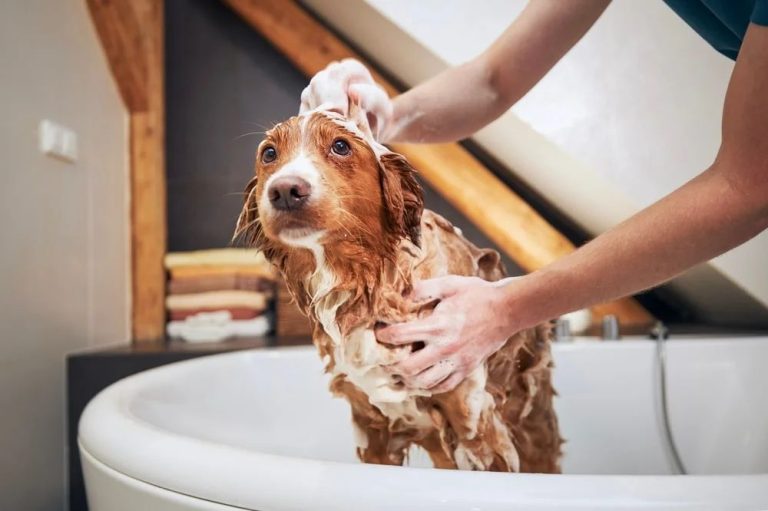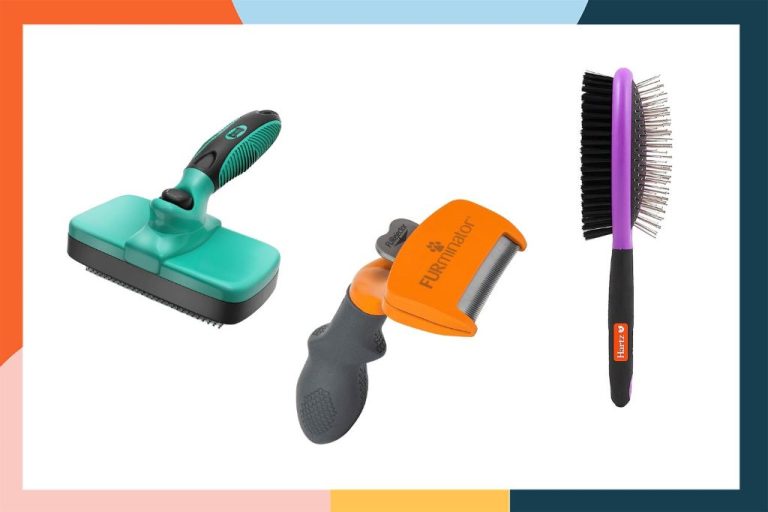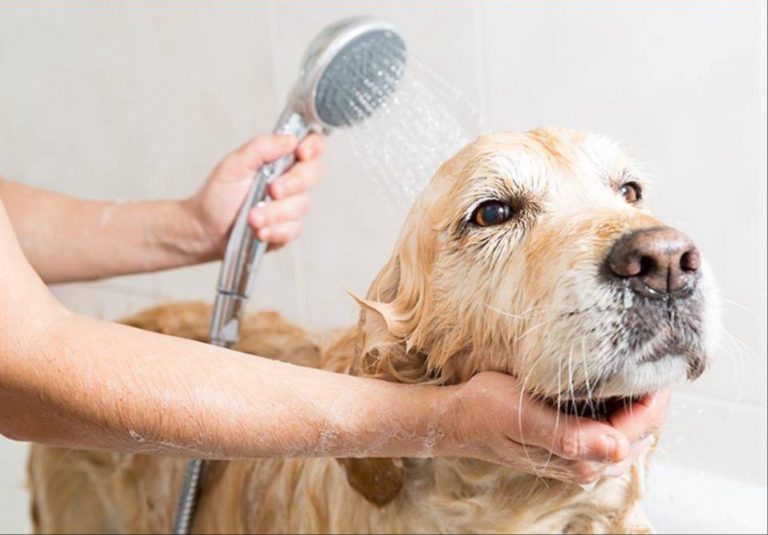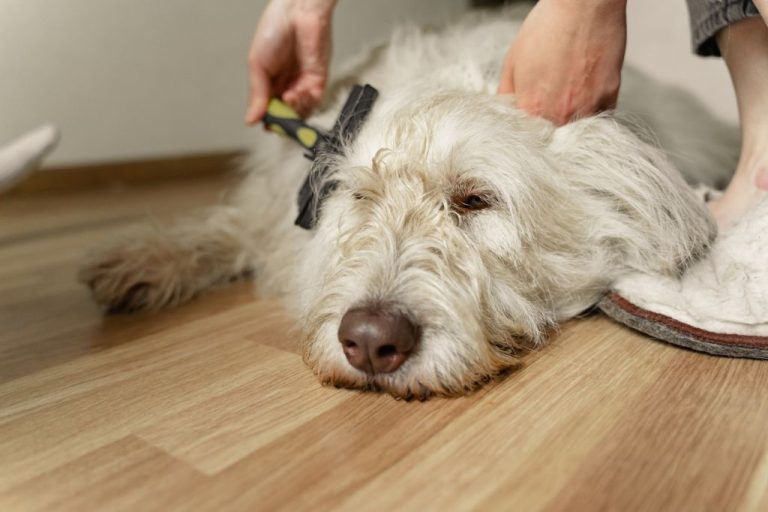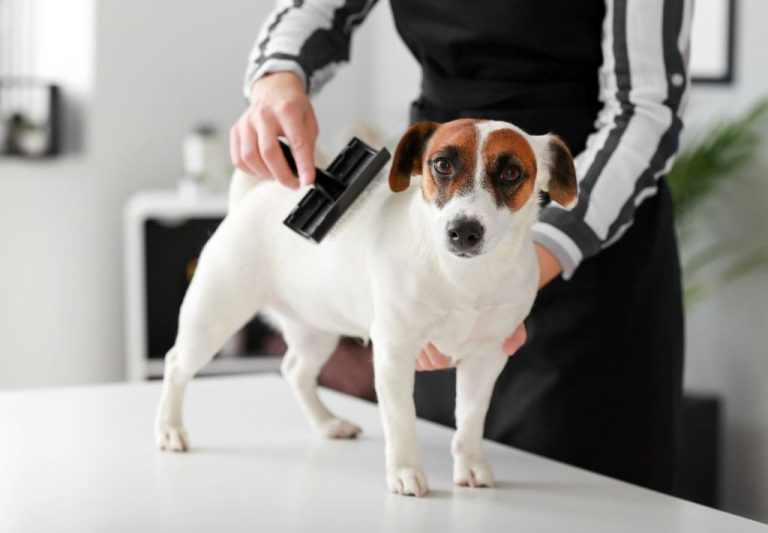Grooming Tools Every Dog Owner Should Have In Their Arsenal
Proper grooming is essential for the health and well-being of dogs. A good grooming routine removes dirt, loose hair, parasites, and debris while distributing natural oils across your dog’s coat and skin. Grooming helps prevent skin issues like hot spots, rashes, and infections. It also gives you a chance to inspect your dog’s body for any abnormalities or problems that may need veterinary attention. Having the right grooming tools makes the process safer, easier and more effective. This article will overview some of the most important grooming tools every dog owner should have in their arsenal.
Slicker Brush
A slicker brush is one of the most essential brushes for any dog owner to have. As described by the AKC, slicker brushes consist of brush heads covered with short, tightly-packed wire pins angled to go through the coat and avoid the skin https://www.akc.org/expert-advice/health/types-dog-brushes-shedding/. They are excellent for helping remove loose hair and preventing matting in dogs with medium to long coats.
Slicker brushes gently remove dead hair that’s caught in the coat before it can tangle into mats. The short wire bristles glide through the top coat while lifting out debris and tangles. As explained by WagWalking, slicker brushes are great for dogs with wiry coats like Terriers https://wagwalking.com/grooming/brush-a-dog-with-a-slicker-brush. Regular slicker brushing can help prevent painful matting and keep your dog’s coat neat and healthy.
Undercoat Rake
An undercoat rake is an essential grooming tool for dogs that shed heavily or have a dense double coat. The purpose of an undercoat rake is to remove loose hair from the undercoat without disturbing the topcoat. This helps prevent mats and tangles while reducing shedding around the home. Unlike slicker brushes which only brush the surface, undercoat rakes penetrate deep into the coat to pull out loose undercoat hairs before they can mat (Source).
Undercoat rakes have long, wide-spaced teeth to reach deep into the coat and grasp the undercoat hairs. The rounded ends ensure the tool glides smoothly without scratching the skin. Owners should gently rake through the coat in sections, going with the grain of the hair growth. Regular undercoat raking keeps shedding under control and removes hair before it gets trapped. For heavy shedders, undercoat raking can dramatically reduce the amount of loose hair in the home (Source).
Nail Clippers
Nail clippers are an essential tool for any dog owner to have. Trimming your dog’s nails regularly with nail clippers helps prevent splitting, cracking, and breaking which can lead to discomfort and pain (The Importance of Trimming Dog Nails). Keeping your dog’s nails trimmed to the proper length also reduces the risk of injury from getting nails caught on surfaces. Overgrown nails can get snagged and tear, causing bleeding and exposing the quick. Long nails may also force your dog’s feet out of proper position, putting strain on joints and ligaments which can lead to arthritis over time, especially in older dogs (Ear Cleaner
Keeping your dog’s ears clean is essential for preventing painful ear infections, which are common in dogs. Ear cleaners help remove dirt, debris, and wax that can build up in a dog’s ear canal. As per VCA Animal Hospital, excess buildup in the ears can lead to infection and irritation. Gently cleaning your dog’s ears weekly with a veterinarian-approved solution can help reduce the risk of infection. According to Greenville Animal Hospital, most dogs with infected ears will need a deep cleaning from their veterinarian to remove excess wax and debris. However, regular maintenance cleanings at home can help prevent infections from occurring in the first place. PetMD recommends cleaning your dog’s ears “every 1 to 2 weeks.” Gently wipe out debris with cotton balls soaked in cleaner. Never use q-tips, which can damage the ear canal. Be sure to use a cleaner specifically formulated for dogs, as human products may be unsafe. Keeping your dog’s ears clean removes built-up debris and wax, allowing air to circulate freely. This keeps your dog comfortable and reduces the risk of painful infections that often require antibiotic treatment from the vet. A flea comb is an essential grooming tool for removing fleas and flea eggs. Flea combs have fine, tightly spaced teeth that can pick up fleas hiding deep in your dog’s coat. Using a flea comb helps prevent flea infestations by removing both adult fleas and eggs before they can hatch and spread. To properly use a flea comb, start at your dog’s head and neck where fleas often first appear. Gently run the comb through your dog’s fur following the direction of hair growth. Check the comb after each pass and dip it in soapy water to remove any fleas or eggs caught in the teeth. Work slowly and methodically, combing one section of fur at a time to cover every spot. Pay close attention around the base of the tail, belly, and neck. Flea combs are most effective when used regularly, even if you don’t see any fleas. Comb your dog at least once a week to catch any new fleas before they can reproduce. Always follow up with a flea comb after applying flea medication for the best protection. With routine use, a quality flea comb will remove fleas and eggs and prevent major infestations. According to PetMD, “Flea combing can be a wonderful bonding experience if done correctly. Try pairing the combing with praise, dog treats and maybe playtime so that it’s a positive experience for your dog.” One of the most important tools to have for maintaining your dog’s dental health is a toothbrush and toothpaste formulated specifically for dogs. According to the VCA Animal Hospitals, “Periodontal disease, also known as gum disease, occurs when gingivitis is left untreated.” Gingivitis comes from a buildup of plaque and tartar on the teeth. This can lead to infection and inflammation which can spread to the roots and bones that hold the teeth in place. Brushing your dog’s teeth regularly removes plaque and tartar to prevent gingivitis and more severe periodontal disease. The WebMD slideshow recommends building up to daily brushing which is ideal, but even a few times a week can make a difference. When selecting a toothpaste, be sure to choose one formulated for dogs, not human toothpaste. Human toothpaste contains ingredients like xylitol which can be toxic to dogs. Opt for a veterinarian-approved enzymatic toothpaste that will safely work with your dog’s oral pH level to control tartar and plaque buildup. With regular at-home brushing along with annual veterinary dental cleanings, you can help your dog maintain good oral health and prevent painful dental disease. Grooming wipes are a must-have for quick cleanups in between baths. These pre-moistened wipes allow you to spot clean your dog’s coat, paws, underbelly, and other areas. They can remove light dirt, mud, grass stains, and more in a gentle but effective way. According to Pogi’s, grooming wipes help eliminate odor on dogs by wiping away dirt and dander. They are ideal for usage on paws when coming inside, underbelly cleaning, and sanitizing the coat. Other benefits of grooming wipes include being quick and easy to use compared to full baths. As Pride + Groom discusses, you can use them on a variety of areas and they help keep your dog clean between full grooming sessions. Look for grooming wipes that are gentle, non-irritating, and designed specifically for dogs. Avoid using baby wipes, as the ingredients may be harsh for a dog’s skin. Matted fur can be painful and irritating for dogs. Using a dematting tool is an effective way to safely work out tangles and knots in your dog’s coat without having to shave them down. According to PetEdge, “Reduce dog and cat-grooming fatigue with our selection of professional ergonomic dematting rakes and tools from Andis, Master Grooming, …” (https://www.petedge.com/grooming-tools/dog-dematting-tools). Look for dematting tools with sharp stainless steel blades that can cut through mats but won’t scratch the skin. Many quality options have ergonomic handles for comfort. It’s best to start working on mats little by little instead of trying to remove large ones all at once. Always be very gentle and stop if you see signs of skin irritation. With patience and the right dematting tool, you can keep your dog’s coat healthy and mat-free. Keeping your dog well-groomed is essential for their health and happiness. Luckily, there are several key grooming tools that every dog owner should have to make at-home grooming efficient and effective. A slicker brush and undercoat rake allow you to brush away dead hair and distribute oils for a healthy coat. Nail clippers help keep your dog’s nails neatly trimmed to prevent injury or discomfort. An ear cleaner removes built-up wax and debris to prevent infections. A flea comb finds and removes any fleas or flea dirt. A toothbrush and toothpaste keep your dog’s teeth plaque-free. Grooming wipes conveniently clean your dog between full baths. And a dematting tool safely works out tangles and mats without pulling on your dog’s skin. Having these grooming tools on hand allows you to regularly groom your dog at home. This saves you money on professional grooming visits while letting you bond with your dog and monitor their coat, skin, ears, teeth, and nails. With the right tools, you can keep your dog looking, feeling and smelling their very best!Flea Comb
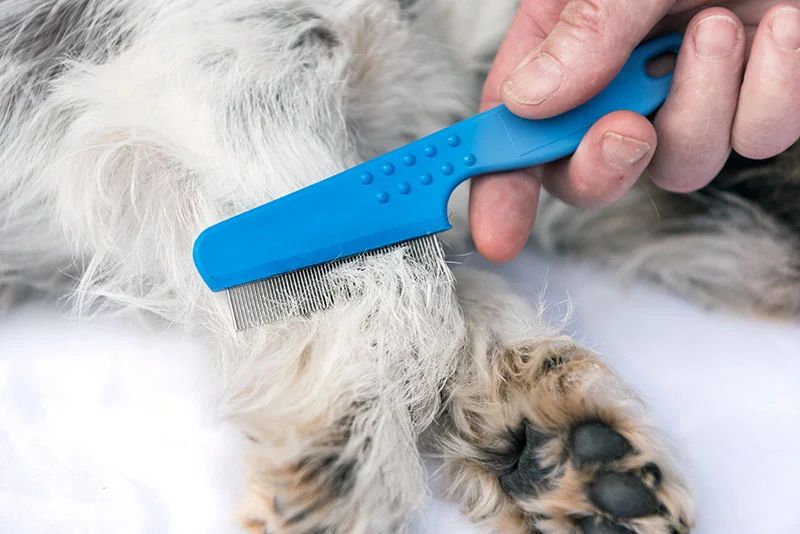
Toothbrush & Toothpaste
Grooming Wipes
Dematting Tool
Conclusion

